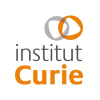PhD Position F/ M Anticipating Human Behavior for Human-Robot Interaction
Contexte et atouts du poste
Collaboration between Inria team THOTH and the multidisciplinary institute in artificial intelligence (MIAI) in Grenoble
Research activities in MIAI aim to cover all aspects of AI and applications of AI with a current focus on embedded and hardware architectures for AI, learning and reasoning, perception and interaction, AI & society, AI for health, AI for environment & energy, and AI for industry 4.0.
The close connection to University of Grenoble Alpes offers additionally many oportunities for collaboration, further training and networking within and cross research fields.
Mission confiée
Keywords human-robot interaction, machine learning, computer vision, representation learning
Theme/Domain Human-robot systems are challenging because the actions of one agent can significantly influence the actions of others. Therefore, anticipating the partner's actions is crucial. By inferring beliefs, intentions, and desires, we can develop cooperative robots that learn to assist humans or other robots effectively. In this project we are in particular interested in estimating human intentions to enable collaborative tasks between humans and robots such as human-to-robot and robot-to-human handovers.
Context and Motivation Even after three decades of research in human-robot interaction, current systems still struggle to comprehend users’ intentions, goals, and needs, thus failing to anticipate their actions. A shared "non-verbal" language is missing, which would enable communication beyond classical user commands for robot control. This absence of a common representation of behavioral skills, which would allow anticipation of each other's behavior, limits an agent's ability to interact and collaborate effectively with humans. We aim to build a new generation of human-robot interaction that pro-actively adapts to users’ future input actions by monitoring their movements and predicting their interaction intentions.
Contact The thesis will be jointly supervised by Pia Bideau (THOTH), Karteek Alahari (THOTH) and Xavier Alameda Pineda (RobotLearn).
Please apply with the typical application documents: CV, certificates (MSc degree), research statement and two references. We will screen applications on a rolling basis. The position will be filled as soon as a suitable candidate is found.
Principales activités
Summary
This project aims to estimate human intentions within a collaborative human-robot setup using visual data. Traditional approaches to action classification focus on identifying and categorizing immediate actions. However, collaborative tasks, such as human-to-robot handovers, demand a more nuanced understanding. These tasks require not only the ability to classify for example the type of the human grasp accurately but also to anticipate future actions effectively.
To achieve this, the project will:
By combining these elements, the project seeks to create a more intuitive and effective human-robot interaction framework. This will enable robots to better understand and predict human behavior, leading to smoother and more intuitive collaborations for a variety of handover tasks.
Goals
By achieving these objectives, the project seeks to contribute to developing systems that are capable of adapting to their environment and human interaction partners, allowing more intuitive and effective collaboration.
References
[1] Cui, Y., Karamcheti, S., Palleti, R., Shivakumar, N., Liang, P., & Sadigh, D. (2023, March). No, to the right: Online language corrections for robotic manipulation via shared autonomy. In Proceedings of the 2023 ACM/IEEE International Conference on Human-Robot Interaction (pp. 93-101).
[2] Karamcheti, S., Srivastava, M., Liang, P., & Sadigh, D. (2022, January). Lila: Language-informed latent actions. In Conference on Robot Learning (pp. 1379-1390). PMLR.[3] Kushal Kedia, Atiksh Bhardwaj, Prithwish Dan, & Sanjiban Choudhury . InteRACT: Transformer Models for Human Intent Prediction Conditioned on Robot Actions. In IEEE International Conference on Robotics and Automation.
[3] Yang, W., Paxton, C., Cakmak, M., & Fox, D. (2020, October). Human grasp classification for reactive human-to-robot handovers. In 2020 IEEE/RSJ International Conference on Intelligent Robots and Systems (IROS) (pp. 11123-11130). IEEE. [4] Sadok, S., Leglaive, S., Girin, L., Alameda-Pineda, X., & Séguier, R. . A multimodal dynamical variational autoencoder for audiovisual speech representation learning. Neural Networks, 172, 106120.
Compétences
Avantages
Rémunération
1st and 2nd year: 2 100 euros gross salary /month
3rd year: 2 190 euros gross salary / month












